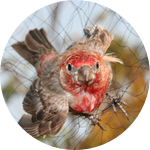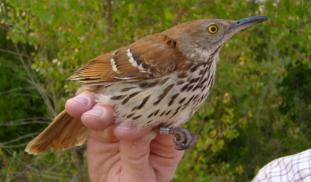Please wait...
About This Project
Netting and banding birds has for a long time been used as a tool for investigations in avian biology and ecology. The bird banding station at Stone Lakes is active throughout the year and has been in continuous operation since April 1996. Over 30,000 birds from over 100 species have been banded at the station. This request is a stop-gap while long-term operations funding is secured. Funds raised beyond the requested amount will be used for banding station operations.
More Lab Notes From This Project

Browse Other Projects on Experiment
Related Projects
How do polar bears stay healthy on the world's worst diet?
Polar bears survive almost entirely on seal fat. Yet unlike humans who eat high-fat diets, polar bears never...
Uncovering hidden insect diversity associated with a likely undescribed gall-forming midge
Does a likely undescribed species of gall-forming midge (pers. comm. Ray Gagné) on Eriodictyon plants (Yerba...
Macrofungi of the California archipelago
The eight islands of the California Archipelago are a well-studied biodiversity hotspot — but we know almost...




